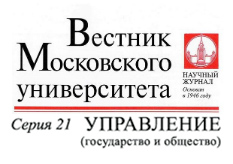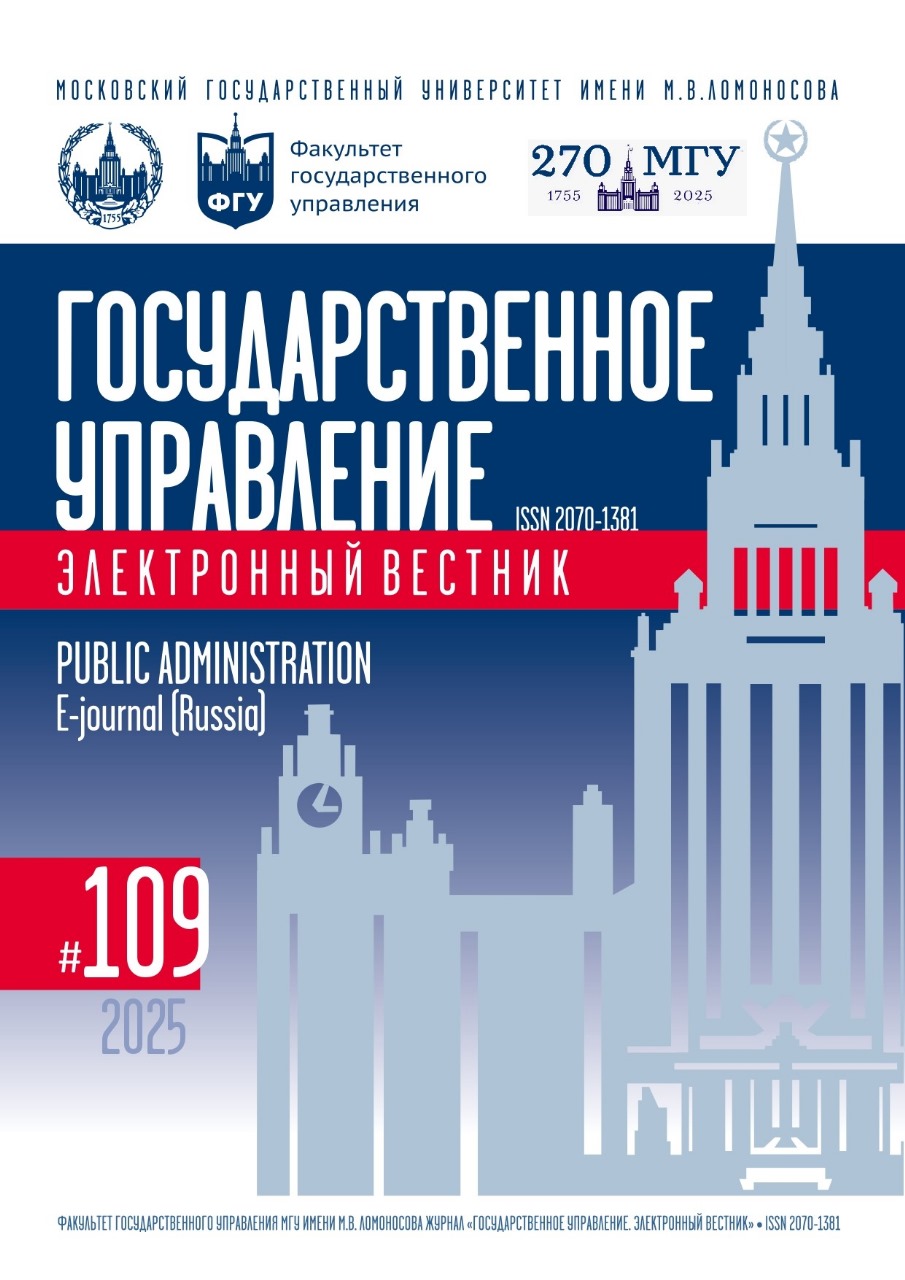Using Elements of Marginal Analysis in Managing Transformation of the Asset Structure of a Shipbuilding Enterprise
DOI:
https://doi.org/10.55959/MSU2070-1381-109-2025-7-19Keywords:
Shipbuilding production systems, non-stationary processes, efficiency, operating leverage, break-even zone, innovation process management, construction cycle, shipbuilding enterprise, industry, restructuring, property complex.Abstract
The presented study is devoted to the issues of transforming the assets of complex knowledge-intensive industrial production in order to increase the efficiency of their use while simultaneously taking into account the interests of both owners (investors), management and direct participants in the production process. The object of the study is a shipbuilding shipyard, which has the specifics of organizing such production in the Russian Federation, i.e. combining the features of both specialization and cooperation and operating in conditions of a significant share of government orders in the current and future portfolios. The theory of control of production systems contains methods, methodologies and recommendations related primarily to stationary systems, the activity of which in conditions of perfect competition is described by equilibrium models. The main vector of scientific research of the authors of the article is the study of non-stationary processes, forecasting and methodology for managing the characteristics of shipbuilding production systems in various market conditions. Effective development of an enterprise is the general goal of microeconomic management. The article sets tasks to normalize the level of costs in shipbuilding, in particular during the construction of the lead ship, and to reduce costs taking into account a given level of risk, taking into account construction cycles. In order to further review and justify the implementation of innovative programs, the necessary and sufficient reform of the enterprise’s assets, which must precede the receipt of orders from government agencies. Elements of marginal analysis (CVP analysis) were used as a research method. It shows the impact of asset structure on important economic indicators, for example, the “break-even area” of the ship construction process. As a result, the authors introduce into scientific use the concept of “break-even area” and the area of “financial risks” as a function of changes in the construction cycle. An economic indicator is proposed that can be used to determine the economic feasibility of transferring the construction of a marine equipment facility to a specific enterprise and to justify programs for reforming the structure of the property complex. A methodological approach to solving the problem of managing innovative processes to change the cost structure at a shipbuilding enterprise is proposed in order to reduce the cost of construction and at the same time ensure an acceptable level of operational risk.
References
Алехин М.Ю., Ваучский А.Н. Алгоритм формирования кластера средств труда производственных систем судостроения, перспективных для инвестирования // Морские интеллектуальные технологии. 2021. № 4-2(54). С. 96–101. DOI: 10.37220/MIT.2021.54.4.073
Бубновская Т.В., Артемьева О.А., Исаенко Л.А., Радченко К.И. Особенности управленческого учета на судостроительном предприятии и оптимизация аналитического учета затрат // Азимут научных исследований: экономика и управление. 2021. Т. 10. № 4(37). С. 67–71. DOI: 10.26140/anie-2021-1004-0014
Де Сото Э. Загадка капитала: Почему капитализм торжествует на Западе и терпит поражение во всем остальном мире. М.: Олимп-Бизнес, 2004.
Егорова А.О., Посошков Д.С. Ключевые показатели эффективности деятельности судостроительных предприятий АО «ОСК» за 2020 год // Инновационная экономика: перспективы развития и совершенствования. 2021. № 7(57). С. 26–31. DOI: 10.47581/2021/PS-3/IE.7.57.04
Зубаткин В.Ю., Аксенов М.Ю. Маржинальный анализ и его роль в принятии управленческих решений // Современные тенденции развития исследовательских компетенций в условиях инновационного кластера. Сборник статей Всероссийской научно-практической конференции с международным участием. Уфа: Общество с ограниченной ответственностью «Аэтерна», 2024. С. 50–52.
Костин К.Б., Мамедова Л.Э., Золотов А.С. Исследование инновационных технологий производства на примере южнокорейских судостроительных предприятий «Большой тройки» // Экономика, предпринимательство и право. 2023. Т. 13. № 12. С. 6649–6664. DOI: 10.18334/epp.13.12.120213
Костюк В.Н. Нестационарные экономические процессы. М.: УРСС, 2004.
Мамедова Л.Э.Г. Способы эффективного использования ресурсов судостроительного предприятия // Журнал университета водных коммуникаций. 2011. № 2. С. 91–97.
Портер М. Конкуренция. М.: ИД Вильямс, 2001.
Akhilgova Z.Kh., Yurasova I.O. Practical Aspects of CVP Analysis Application in Russia // Экономика и предпринимательство. 2019. № 10(111). С. 1283–1287.
Baumol W.J., Bowen W.G. Performing Arts: The Economic Dilemma. New York: The Twentieth Century Fund, 1966.
Jere T. Marginal Analysis as the Basis for Decision Making // Интерактивная наука. 2021. № 4(59). С. 46–50. DOI: 10.21661/r-553800
Mamedova L., Gogolukhina M. Organisational and Economic Aspects of Deep Modernization and Foundation Projects of Shipbuilding Yards // Transportation Research Procedia. 2022. Vol. 63. P. 2072–2078. DOI: 10.1016/j.trpro.2022.06.231
Manea M., Manea E. Shipbuilding — An Analysis from the Perspective of Enterprise Resources Planning System // World Journal of Engineering and Technology. 2023. Vol. 11. Is. 1. P. 81–112. DOI: 10.4236/wjet.2023.111008
Mun J. Empirical Cost Estimation for U.S. Navy Ships // Universal Journal of Management. 2019. Vol. 7. Is. 5. P. 152–176. DOI: 10.13189/ujm.2019.070502
Ozkok M., Helvacioglu I.H. A Continuous Process Improvement Application in Shipbuilding // Brodogradnja. 2013. Vol. 64. P. 31–39.
Suheon J., Saenal S., Huiqiang S., Yong-Kuk J., Jong Gye S. System Development for Establishing Shipyard Mid-Term Production Plans Using Backward Process-Centric Simulation // International Journal of Naval Architecture and Ocean Engineering. 2019. Vol. 12. P. 20–37. DOI: 10.1016/j.ijnaoe.2019.05.005
Wang X.Y., Bai J.H. Factor Flow, Resource Mismatch and Total Factor Productivity // Inquiry into Economic Issues. 2022. Vol. 10. P. 50–61.
Xue L., Shi G., Dai D., Xu Y. Two-Stage Efficiency Structure Analysis Model of Shipbuilding Based on Driving Factors: The Case of Chinese Shipyard // Open Journal of Social Sciences. 2020. Vol. 8. P. 182–200. DOI: 10.4236/jss.2020.82015
Zhang W., Bo L., Zhang S., Wang Y. Assessing the Relationship between Resource Misallocation and Total Factor Productivity Based on Artificial Neural Network // Computational Intelligence and Neuroscience. 2022. DOI: 10.1155/2022/5148879
Downloads
Published
Similar Articles
- Alexander S. Koretsky, Principles of Forming Digital Ecosystem of Process Management Based on Business Model , Public Administration. E-journal (Russia): No. 84 (2021)
- Zhang Jianhua, Innovation Research on Digital Transformation of Manufacturing Industry in China and Russia in the Digital Economy Era , Public Administration. E-journal (Russia): No. 110 (2025)
- Nadezhda B. Postike, Importance of European Experience in Forming State Policy for Developing Agricultural Sector in the Russian Empire in the 19th Century , Public Administration. E-journal (Russia): No. 92 (2022)
- Alexander Ya. Livshin, Aleksandra A. Sidorova, Fostering Social Innovations in the Nonprofit Sector in an Uncertain Environment , Public Administration. E-journal (Russia): No. 110 (2025)
- Andrey A. Stesyakov, Capabilities of Industrial Outsourcing of Electronics through Contract Manufacturing in China Based on Cluster Model , Public Administration. E-journal (Russia): No. 106 (2024)
- Aigul E. Isaeva, Innovative Digital Educational Ecosystem as a Basis for Transition to Industry 4.0 , Public Administration. E-journal (Russia): No. 96 (2023)
- Alexander A. Kovalenko, Developing the Model of Social Controlling of Enterprise’s Innovative Activity , Public Administration. E-journal (Russia): No. 111 (2025)
- Guzel I. Gumerova, Elmira Sh. Shaimieva, Aсtivation of Educational Organizations’ Innovative Activity in Digital Economy , Public Administration. E-journal (Russia): No. 96 (2023)
- Artem S. Shcherbakov, Relevance of the Indicator “Quantity of Intellectual Property Assets” for Operational Management of Regional Innovation Efforts , Public Administration. E-journal (Russia): No. 111 (2025)
- Vera S. Shkarina, Intellectual Capital and Management System in Creative Economy Organizations , Public Administration. E-journal (Russia): No. 106 (2024)
You may also start an advanced similarity search for this article.




